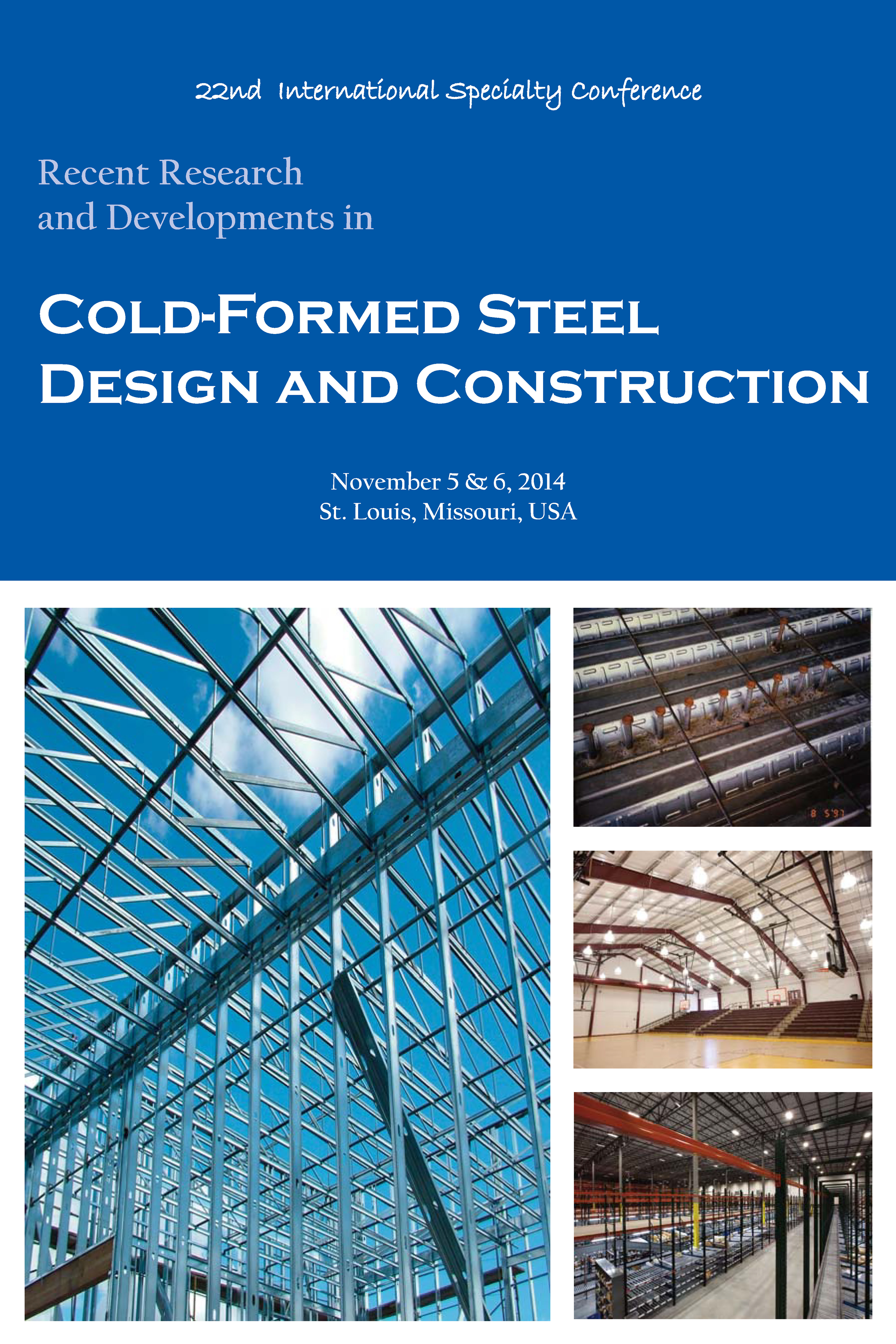Session Dates
06 Nov 2014
Abstract
The objective of this paper is to validate a tool that design engineers could employ to develop mechanics-based predictions of the lateral response of wood-sheathed cold-formed steel (CFS) framed shear walls applicable in a wide variety of situations. Wood framed shear walls enjoy a variety of tools, most notably SAPWood and its predecessor CASHEW, that provide a means to predict the complete hysteretic behavior of a shear wall based on the nail fastener schedule and board selection. The existence of these tools helps engineers in unique design situations, encourages innovation in shear wall design particularly for Type I shear walls, and provides enabling modeling details critical for seismic performance-based design. Recently, as part of the CFS-NEES effort, the cyclic performance of CFS stud-to-sheathing connections has been characterized. In addition, the cyclic performance of full CFS shear walls, utilizing the same connections, has also been characterized. This paper explores an engineering model implemented in OpenSees that directly employs the fastener-based characterization as the essential nonlinearity in a CFS framed shear wall. CFS shear wall framing is modeled with beam elements, hold downs are modeled with linear springs, sheathing is modeled as a rigid diaphragm, and the stud-to-sheathing connections as zero-length springs utilizing the Pinching04 material model in OpenSees. Production, analysis, and post-processing of the model are automated with custom Matlab scripts that form the basis for a future engineering tool. The model is validated against monotonic and cyclic shear wall tests, and is shown to have good agreement. In addition to providing a mechanical means to assess shear walls, high fidelity shell finite element models are completed in ABAQUS to shed additional light on the mechanics-based OpenSees model. The long-term goal of the modelling is to provide a reliable means to predict the lateral response of any CFS framed system that relies on connection deformations, such as gravity walls or wood-sheathed floor diaphragms in addition to shear walls.
Department(s)
Civil, Architectural and Environmental Engineering
Research Center/Lab(s)
Wei-Wen Yu Center for Cold-Formed Steel Structures
Sponsor(s)
National Science Foundation (U.S.)
American Iron and Steel Institute
Meeting Name
22nd International Specialty Conference on Cold-Formed Steel Structures
Publisher
Missouri University of Science and Technology
Document Version
Final Version
Rights
© 2014 Missouri University of Science and Technology, All rights reserved.
Document Type
Article - Conference proceedings
File Type
text
Language
English
Recommended Citation
Bian, G.; Buonopane, S. G.; Ngo, Hung Huy; and Schafer, Benjamin W., "Fastener-Based Computational Models with Application to Cold-Formed Steel Shear Walls" (2014). CCFSS Proceedings of International Specialty Conference on Cold-Formed Steel Structures (1971 - 2018). 4.
https://scholarsmine.mst.edu/isccss/22iccfss/session11/4
Fastener-Based Computational Models with Application to Cold-Formed Steel Shear Walls
The objective of this paper is to validate a tool that design engineers could employ to develop mechanics-based predictions of the lateral response of wood-sheathed cold-formed steel (CFS) framed shear walls applicable in a wide variety of situations. Wood framed shear walls enjoy a variety of tools, most notably SAPWood and its predecessor CASHEW, that provide a means to predict the complete hysteretic behavior of a shear wall based on the nail fastener schedule and board selection. The existence of these tools helps engineers in unique design situations, encourages innovation in shear wall design particularly for Type I shear walls, and provides enabling modeling details critical for seismic performance-based design. Recently, as part of the CFS-NEES effort, the cyclic performance of CFS stud-to-sheathing connections has been characterized. In addition, the cyclic performance of full CFS shear walls, utilizing the same connections, has also been characterized. This paper explores an engineering model implemented in OpenSees that directly employs the fastener-based characterization as the essential nonlinearity in a CFS framed shear wall. CFS shear wall framing is modeled with beam elements, hold downs are modeled with linear springs, sheathing is modeled as a rigid diaphragm, and the stud-to-sheathing connections as zero-length springs utilizing the Pinching04 material model in OpenSees. Production, analysis, and post-processing of the model are automated with custom Matlab scripts that form the basis for a future engineering tool. The model is validated against monotonic and cyclic shear wall tests, and is shown to have good agreement. In addition to providing a mechanical means to assess shear walls, high fidelity shell finite element models are completed in ABAQUS to shed additional light on the mechanics-based OpenSees model. The long-term goal of the modelling is to provide a reliable means to predict the lateral response of any CFS framed system that relies on connection deformations, such as gravity walls or wood-sheathed floor diaphragms in addition to shear walls.




Comments
This paper was funded in part by the U.S. National Science Foundation (NSF) CFS-NEES project: NSF-CMMI-1041578: NEESR-CR: Enabling Performance-Based Seismic Design of Multi-Story Cold-Formed Steel Structures and NSFCMMI-1300484: GOALI/Collaborative Research: Advancing System Reliability with Application to Light-Framed Structures.